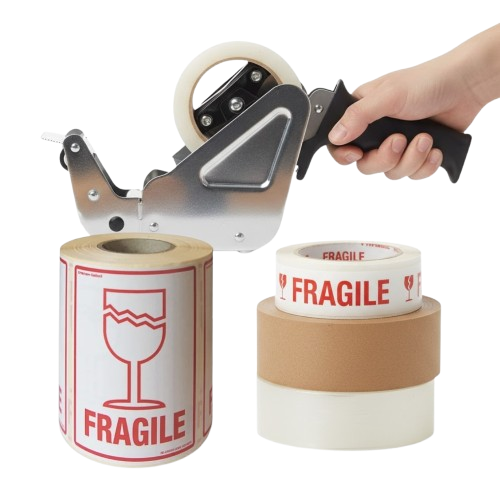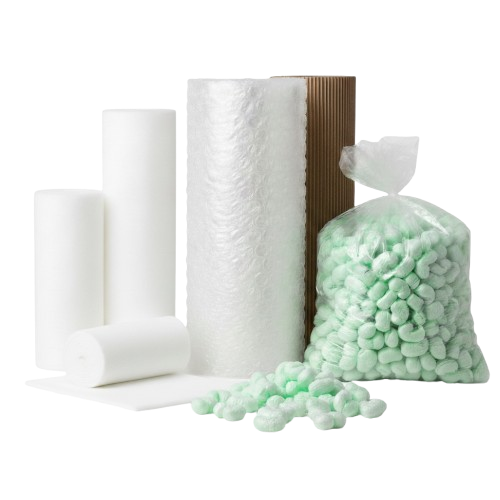A GUIDE TO FINDING THE RIGHT BIN LINERS / BIN BAGS
Types of Bin Bags
To find the best type of bag for your needs, you'll need to think about how you separate your rubbish and dispose of your waste because whether you're disposing of general rubbish, recyclable materials or food waste, there is a bin bag to suit. The main types of bin bags to choose from are:
- Black refuse sacks
- Clear bin bags
- Coloured bin bags
- Bin liners
Using our categories below, you'll find a bin bag to suit your requirements.
|
Black Refuse Sacks |
Black Refuse Sacks
There will always be general rubbish which can't be recycled in any businesses waste, for this residual waste should be disposed of using black refuse sacks. Examples of general waste include:
- Contaminated food packaging
- Sweet wrappers and crisp packets
- Polystyrene
- Tissues
- Floor sweepings
For Black Refuse Sacks, shop the collection >
Clear Bin Bags
One of the most popular uses of clear bin bags is as part of a dry mixed recycling system.
A dry mixed recycling system is where a wide range of uncontaminated recyclable materials are all disposed of into one single recycling bin. These mixed materials are then collected and sent to a materials recovery facility (MRF) where they will be segregated into different waste streams and recycled separately.
Some of the most common types of material used in a dry mixed recycling system include:
- Paper - newspapers, office paper, and magazines
- Cardboard - corrugated cardboard and card
- Plastic – clean drinks bottles, salad trays, and microwavable meal trays
- Metal – clean drinks cans and food tins
Many waste management services will refuse to collect recyclable materials that are not stored in clear or tinted bin bags. Collection services need to see that all the materials are recyclable and not mixed in with general waste. Clear bin bags enable this visual check, while a black refuse sack would prevent it.
Because all the materials are disposed of into one single container, there is no need for colour-coded segregation. Therefore, clear bin bags make the best choice for dry mixed recycling systems.
Clear bin bags are also preferred for the disposal of general waste in many retail and hospitality businesses, as well as high-security environments such as airports, train stations, and shopping centres. The clear material helps to prevent the theft of valuable merchandise and allows suspicious items to be easily identified.
For Clear Bin Bags, shop the collection >
Coloured Bin Bags
If you produce a large quantity of one or more recyclable materials, it is often more cost-effective to segregate each type into separate waste streams on-site – rather than using a dry mixed recycling system.
While this waste segregation can be achieved with a clear refuse sack, coloured bin bags help to ensure the right material is disposed of into the right bag. This reduces the risk of general rubbish and incorrect materials contaminating the recycling process.
There is no hard and fast rule for recycling colours. If you are looking to dispose of any recyclable material into its own waste stream, you should use whatever coloured bins you already have and match the bin bag colour to suit. We offer a range of coloured bin bags - including red, blue, green, and yellow sacks - that are all ideal for use with your coloured bins. Using colour-coded lids and stickers will also help to teach your staff and customers which material matches which colour.
Coloured bin bags are also tinted so that, like clear bin bags, the contents can be easily viewed by waste management services when collecting your refuse.
For Coloured Bin Bags, shop the collection >
Bin Liners
The difference between bin bags and bin liners is that a bin bag is stronger and generally larger than a bin liner. Bin liners are designed to keep your bins clean and hold a small amount of waste. As such, they are often used with small pedal and swing bins in guestrooms and hotel bathrooms, as keeping the bin hygienic is important to customer satisfaction and well-being.
For Bin Liners, shop the collection >
What size bin liner do I need for my round bins?
TOP TIP: If you can't find an exact match, you should always size up and choose the larger sack as this will ensure it will fit your waste container.
To find the correct size bin bag for your round bins, there are a few simple steps you need to take.
- Measure the circumference of your bin. The circumference is the length of the edge around a circle – in this case, the length all the way around the rim.
- Then divide the circumference by two. The resulting number is the open width dimension you need for your bin bag.
- Measure the height of your bin from top to bottom. Add approximately 7” onto the height to find the length of bin bag you need. This extra 7” allows for an overhang that stops the bag from falling in the bin and gives you plenty of room for tying.

What size bin liner do I need for my rectangular & square bins?
To find the right bin bag for your square and rectangular bins you must add up each of its sides and divide by two.
- Calculate the perimeter - the total measurements of all the sides of your bin.
- Divide the perimeter of your bin by two. The resulting number is the open width you need for your bin bag.
- Measure the height of your bin and add roughly 7” onto the total to allow for a good overhang and easy tying.
What weight bin liner do I need?
To avoid rips and tears when transporting waste around your venue, it’s essential you pick a bin bag that is strong enough to handle the weight of your rubbish.
For most businesses, a 5kg or 10kg bag will be perfect for day-to-day use. However, if you are disposing of heavy waste, a 20kg sack may be better suited. Consider what kind of waste will go into your refuse sack and judge the weight that each bag will need to hold.




















































